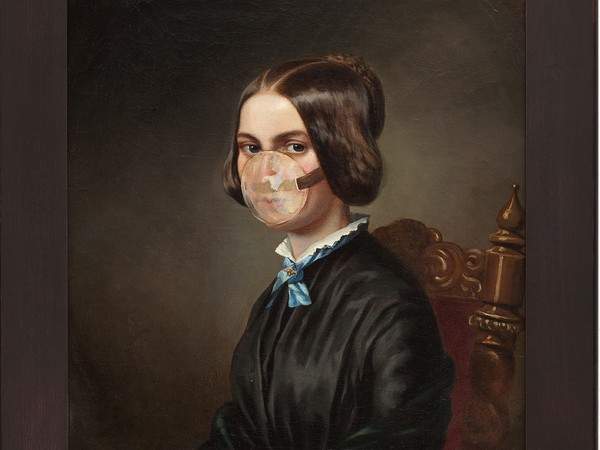The Coppola Foundation in Vicenza resumes its exhibition activities with a solo exhibition of Austrian artist Markus Schinwald(Salzburg, 1973), curated by Davide Ferri. The exhibition is open to the public from October 11, 2020 to February 27, 2021.
The title of the exhibition, Misfits, refers to the works selected for the show and, ideally, offers a representative key to Schinwald’s entire output. Translated into Italian as “misfits,” Misfits refers to some of the salient features of the works made by the Austrian artist over the past two decades, works in which the body and the figure are corrupted by disturbing details and locked in alienating poses, in a process of manipulation that can touch even everyday objects such as furniture and furnishings.
Articulated in the five levels of the Torrione, the exhibition includes interventions of an installation and sculptural nature, as well as paintings and videos: a heterogeneous corpus that aims to testify to Schinwald’s eclecticism, but at the same time lets the constants of his poetics emerge limpidly. The exhibition opens with the Marionettes series, a group of twelve children depicted in poses and attitudes that express a sense of impatience and mild rebellion. Supported and maneuvered by thin wires, they tap their feet and shake their arms in repetitive movements, creating a visual as well as audible rhythm. Like members of a small gangster gang, they reveal a fragile and grotesque appearance, two qualities that connote many of the works in the exhibition.
The first and second levels of the building, on the other hand, are devoted to Schinwald’s painting, which, over the past decade, has become paradigmatic of an approach aimed at a confrontation, at once homageful and irreverent, with the pictorial tradition, based on the tampering with nineteenth-century portraits of aristocratic figures through alienating insertions - interferences such as prosthetics, masks, erasures, outgrowths - that alter the sumptuous composure of the poses. Schinwald’s painted faces are thus transformed into disturbing, enigmatic and anything but reassuring images, colliding both with the environments in which they are placed - mostly bourgeois interiors - and with the broader tradition of portraiture as a pictorial genre. The characters emanate a strange tension, generated by the contrast between the respectability of their rank and the sense of constraint, bordering on depravity, suggested by the elements that shield or alter their faces.
The theatricality of the Marionettes and the subtly disturbing dimension of the paintings are also found in the videos that occupy the third and fourth floors of the Keep. Orient A and Orient B, these are the titles of the works, are pervaded/supported by mysterious and ambiguous atmospheres, and show groups of performers-almost figures corresponding to those in the paintings-performing actions with no apparent meaning. The figures are grappling with physical limitations and movements that sap their bodies, accomplished against the backdrop of abandoned scenery that fuel the sense of decadence and grotesque tragicness.
Schinwald’s repertoire also includes sculptures composed from the assemblage of Chippendale-style table legs, set up at the highest point of the building: the observatory from which one of the most fascinating views of Vicenza can be seen. It is here that the ascending path of the exhibition and in the work of the Austrian artist ends, a crescendo that leads to this series of sculptures in which what is familiar takes on sinister contours: the table legs are transfigured into alienating, genetically modified organisms that allude to improbable poses and delicately erotic gestures. Whether human figures or objects, the artist’s imagery always tends toward the creation of disturbing, disjointed forms.
The exhibition thus offers the opportunity for a broad look at the poetics of one of the most internationally important European artists who, after his consecration at the 2011 Venice Biennale, an occasion in which Schinwald represented his country, is proposing a new solo exhibition in Italy.
For all information you can visit the official website of the Coppola Foundation.
Pictured: Markus Schinwald, Katja (2016; oil on canvas).
 |
| Markus Schinwald's "Misfits" are on display at the Coppola Foundation in Vicenza, Italy. |
Warning: the translation into English of the original Italian article was created using automatic tools. We undertake to review all articles, but we do not guarantee the total absence of inaccuracies in the translation due to the program. You can find the original by clicking on the ITA button. If you find any mistake,please contact us.